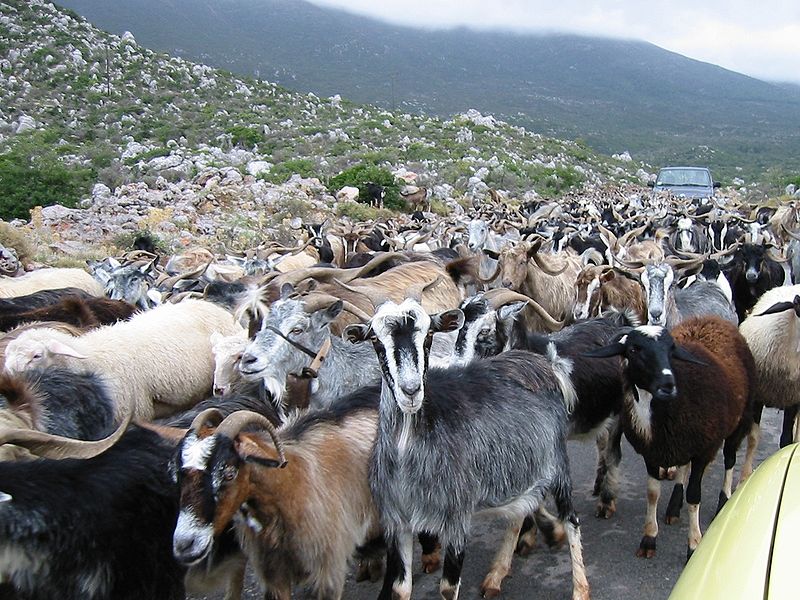Peste des petits ruminants (PPR), or goat plague, has been detected on a goat farm in Western Galilee, according to Israeli veterinary officials (computer translated).

This duly registered goat flock includes about 1510 animals (475 milking does, 185 dry does, about 310 males including kids, and about 525 yearling does and younger female kids. The flock was last vaccinated against PPR on 26 Dec 2013.
The total number of diseased animals — pregnant yearlings and males — is 80. Typical PPR signs have been observed: pneumonia, diarrhea, abortion (in 20 yearlings). Mortality was recorded in 10 yearlings.
Laboratory tests have been applied: swabs and biopsy samples found PCR positive for PPR. Quarantine has been imposed upon the flock. Investigations are ongoing.
Peste des petits ruminants (PPR) is a highly contagious viral disease of sheep and goats. Heavy losses can be seen, especially in goats; all of the affected animals in some herds may die.
Peste des petits ruminants virus (PPRV) is a member of the genus Morbillivirusin the family Paramyxoviridae. Four genetic lineages (lineages 1-4) have been identified. PPRV is closely related to rinderpest virus.
Transmission of PPRV mainly occurs during close contact. Inhalation is thought to be an important route of spread. PPRV is shed in nasal and ocular secretions, saliva, urine and feces. It probably occurs in milk.
Fomites such as water, feed troughs and bedding can probably transmit PPRV for a short time, but do not remain infectious for long periods.
The incubation period can range from two to 10 days; in most cases, clinical signs appear in 2-6 days.
Related: Transboundary animal diseases concerns prompt vaccination campaign at Syria-Lebanon border
The symptoms of PPR are very similar to those of rinderpest: fever, anorexia, depression, nasal and ocular discharges, difficult respiration, necrotic lesions on gum, lips and tongue resulting in salivation, erosions on the nasal mucosa and finally diarrhea The formation of small nodular skin lesions on the outside of the lips around the muzzle and the development of pneumonia during the later stages of the disease are frequently seen in PPR but not in rinderpest.
Mild cases also occur with less marked clinical symptoms and absence of one or more of the cardinalfeatures. Morbidity up to 100 % and mortality rates between 20 and 90 % are common, except in endemic areas or when mild disease occurs.


Why there is outbreak in a vaccinated flock?